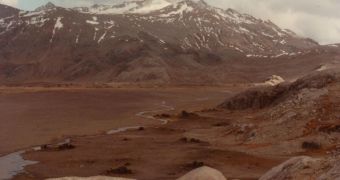Researchers collecting soil samples from several sites in Alaska discovered that a layer of permafrost, buried at a depth of about one meter (3 feet), is mostly made up of organic remains that have great carbon-emitting potential. Professor Chien-Lu Ping, leader of this study, said that this layer could represent a serious threat to the environment if the permafrost on top of it were to melt because of global warming.
Ping argued that by exposing the organic layer, the entire region could change from a carbon sink to a carbon source, meaning that instead of absorbing carbon, the earth would emit carbon at various concentrations and quantities. Geologists speculate that even a two or three degree warming in the atmosphere could cause the ice on top of the permafrost to melt and reveal the carbon-generating layer underneath. Once heated, it would rapidly decompose, releasing large amounts of carbon in the environment.
Professor Ping says that this layer of organic remains is a vital part in the larger carbon-storage system, which also contains the permafrost and the surface layers underneath it. Understanding the relations between the three could give geologists a better understanding of the way the Arctic "carbon pool" works and how the entire area could be affected if the balance were to break. Scientists have already begun to keep track of the thickness the permafrost has, in an attempt to determine the long-term evolution of the upper layers of the soil.
Identifying trends of permafrost reduction could mean that the overall temperature in the Arctic region has increased. Tough it may seem small, such a rise would undoubtedly melt even more glaciers and could eventually lead to the North Pole being completely defrosted in the summer. Already, the ice caps on both poles are being thorn apart by solar radiation that is drawn to the black waters generated by melting ice. This vicious circle is very difficult to break, say environmentalists, even if all carbon emissions on Earth were stopped today.

 14 DAY TRIAL //
14 DAY TRIAL //